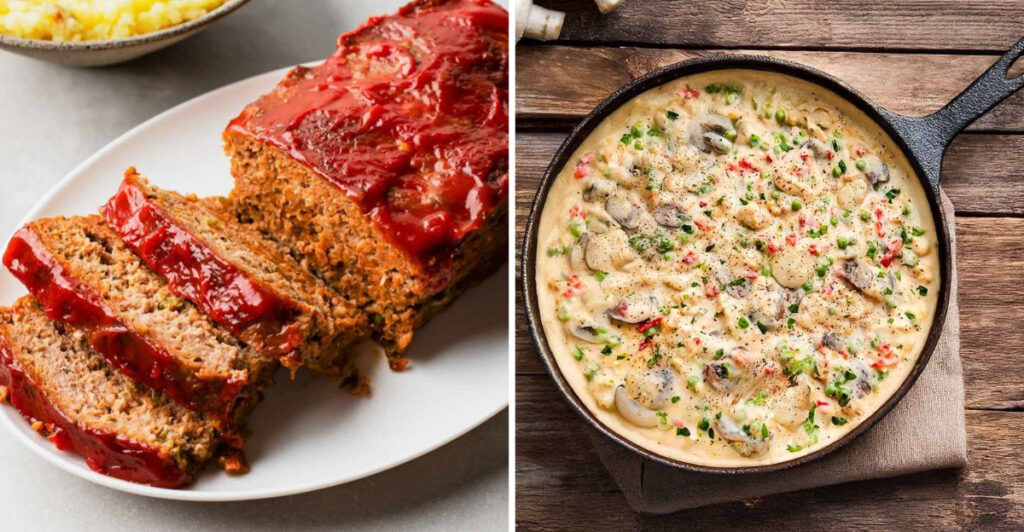Before meal delivery apps and trendy restaurant chains, families gathered around the dinner table for homemade meals that defined generations. These weren’t just recipes but cherished traditions passed down through handwritten recipe cards and weekend cooking lessons. While modern convenience has pushed many of these classics aside, they remain powerful symbols of a time when cooking was both necessity and expression of love.
1. Meatloaf: The Weeknight Wonder
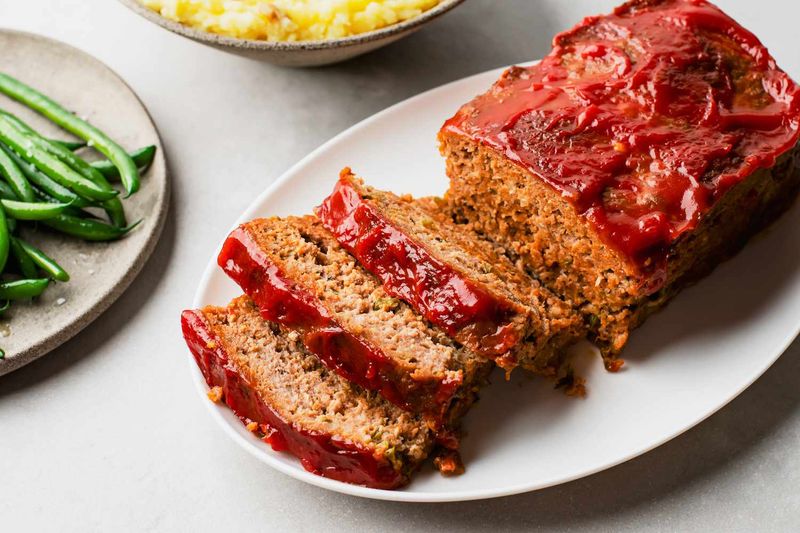
That familiar loaf pan filled with seasoned ground beef, breadcrumbs, and tangy ketchup glaze was the cornerstone of American dinner tables for decades. Born from post-war frugality, meatloaf transformed humble ingredients into comfort on a plate.
Families cherished their secret recipes—some adding bell peppers, others swearing by oatmeal instead of breadcrumbs. The beauty lay in its versatility and practicality: leftovers became sandwiches, and one meal could stretch across several days when budgets were tight.
2. Chicken à la King: Elegant Simplicity

Creamy diced chicken mingling with colorful bell peppers and mushrooms once signaled sophisticated dining at home. Served over toast points, rice, or puff pastry shells, this velvety creation transformed leftover poultry into an elegant affair.
The sherry-infused white sauce gave it a distinctive flavor that felt fancy yet comforting. Popular from the 1930s through the 1970s, it graced dinner party tables and family Sunday suppers alike, making ordinary evenings feel special without breaking the bank.
3. Tuna Noodle Casserole: Depression-Era Ingenuity
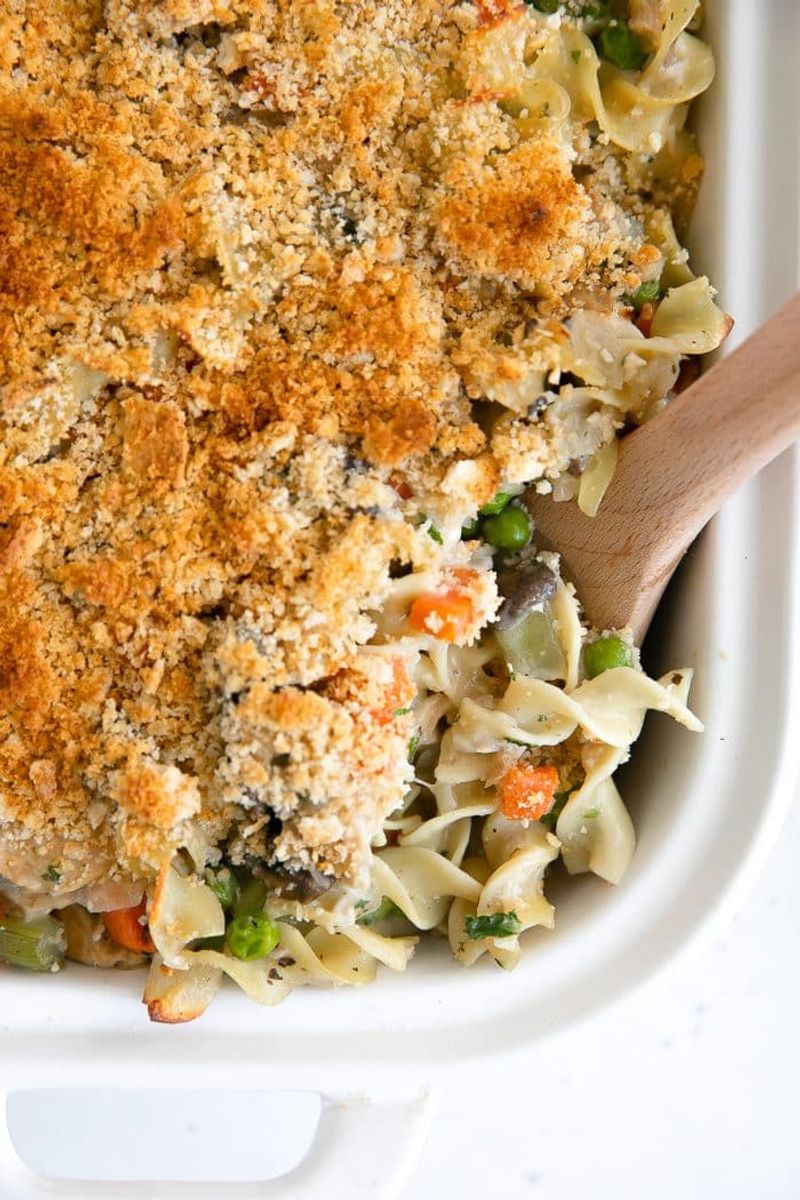
The unmistakable aroma of canned tuna mixed with cream of mushroom soup and egg noodles baking under a crispy breadcrumb topping meant dinner was nearly ready. This Depression-era creation embodied American resourcefulness when fresh ingredients were scarce.
Moms added frozen peas for color or crushed potato chips for extra crunch. The beauty of this dish wasn’t in gourmet flavor but in its ability to feed a family affordably. Many baby boomers recall this casserole appearing weekly—a testament to practical cooking at its finest.
4. Liver and Onions: The Forgotten Nutrition Powerhouse
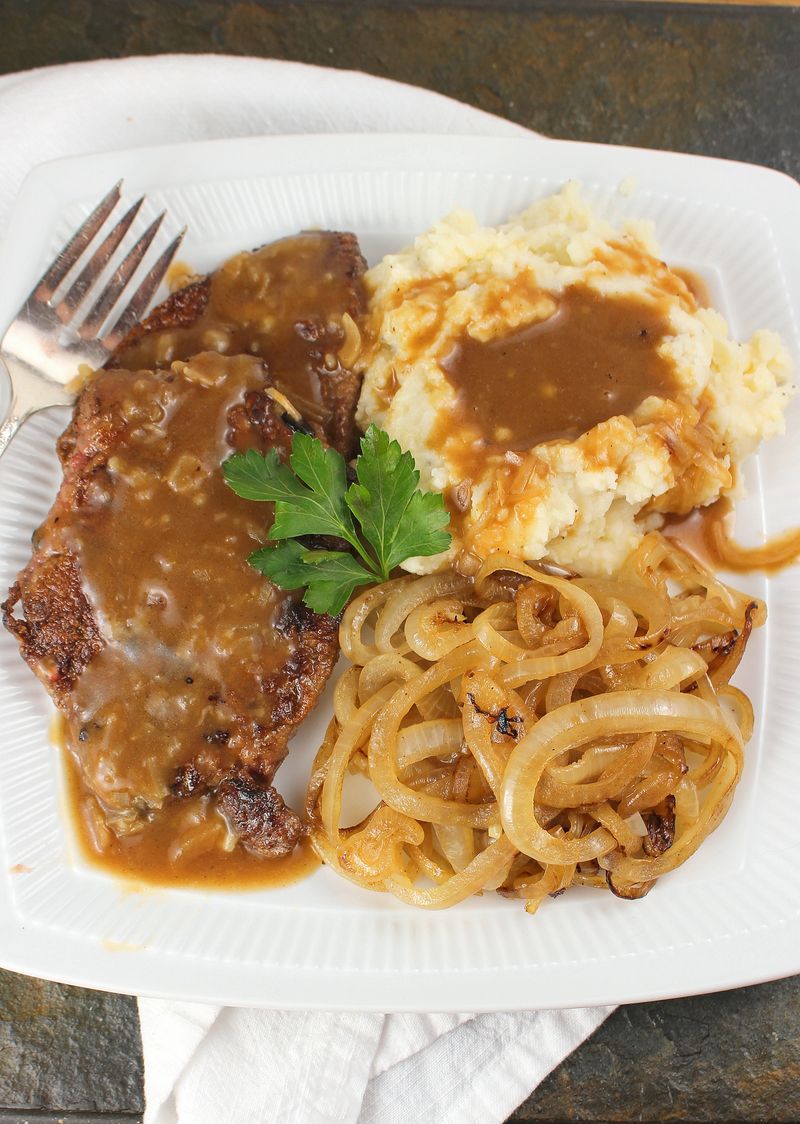
The distinctive aroma of beef liver sizzling with caramelized onions once signaled a nutritious family meal rather than a culinary relic. Grandparents knew the iron-rich organ meat supported growing bodies long before vitamin supplements lined store shelves.
Typically served with mashed potatoes to balance the strong flavor, this dish represented practical nutrition rather than gourmet aspiration. Mothers coaxed reluctant children to clean their plates with promises of dessert. While polarizing even then, liver and onions appeared regularly on mid-century dinner tables—a practice largely abandoned by modern households.
5. Sunday Pot Roast: The Family Gathering Centerpiece
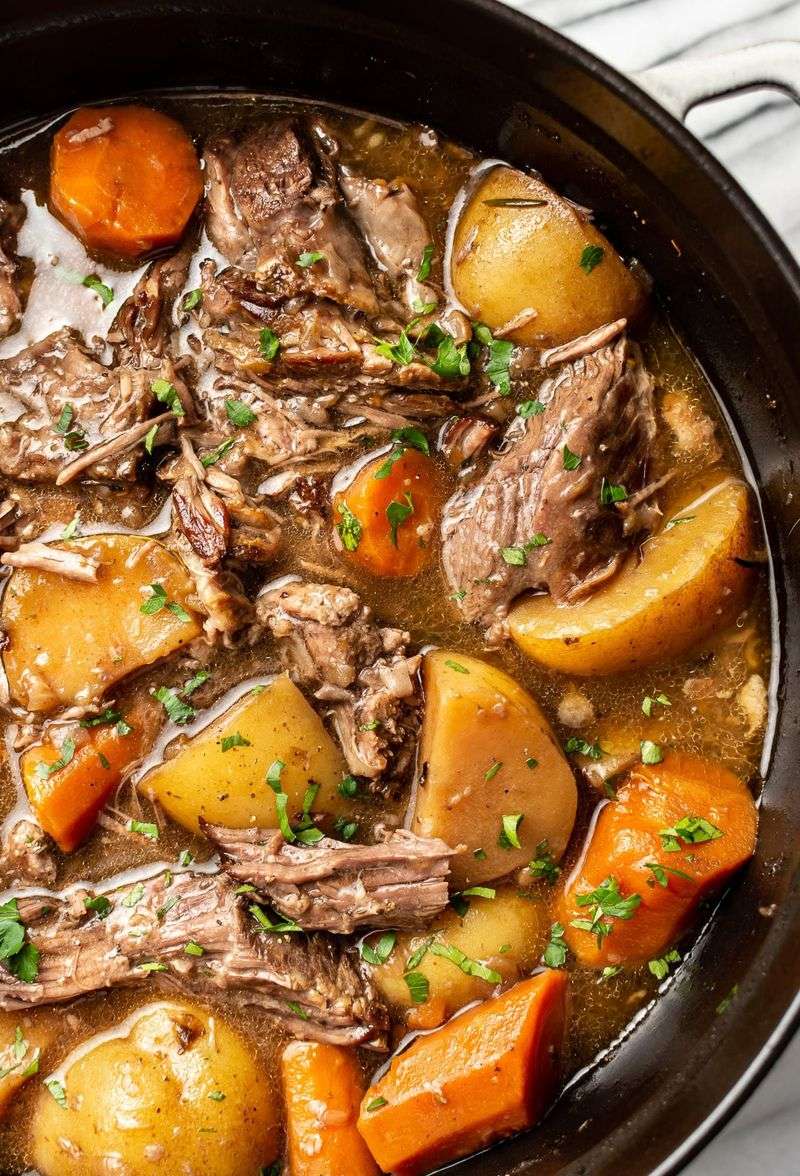
The heavenly scent of beef slowly tenderizing alongside carrots, potatoes, and onions meant Sunday had arrived. Families returned from church to find this one-pot marvel nearly ready after simmering for hours.
More than just dinner, pot roast represented togetherness—a reason to linger at the table sharing stories. The meat, falling apart at the touch of a fork, created mouthwatering gravy for sopping up with fresh bread. Leftovers transformed into sandwiches and hash, stretching the Sunday splurge through leaner weekdays with delicious practicality.
6. Sloppy Joes: Delightful Dinner Chaos
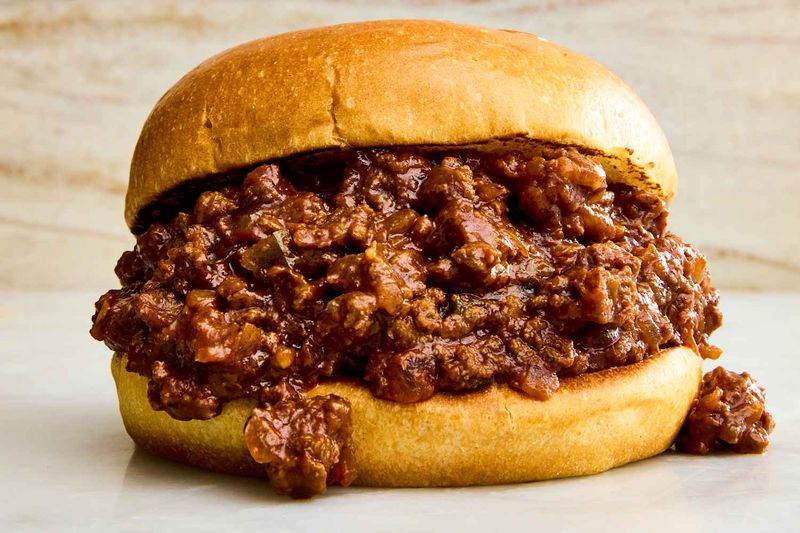
Named for their messy eating experience, these seasoned ground beef sandwiches brought gleeful disorder to dinner time. Children delighted in the tomato-sauced mixture spilling from between hamburger buns, while parents appreciated the quick preparation after busy workdays.
Manwich canned sauce arrived in 1969, but many families preferred homemade versions with ketchup, brown sugar, and Worcestershire sauce. The dish perfectly captured mid-century America’s casual dining revolution—when meals could be fun rather than formal. Paper napkins stood ready as families embraced the delicious mess together.
7. American Goulash: One-Pot Wonder
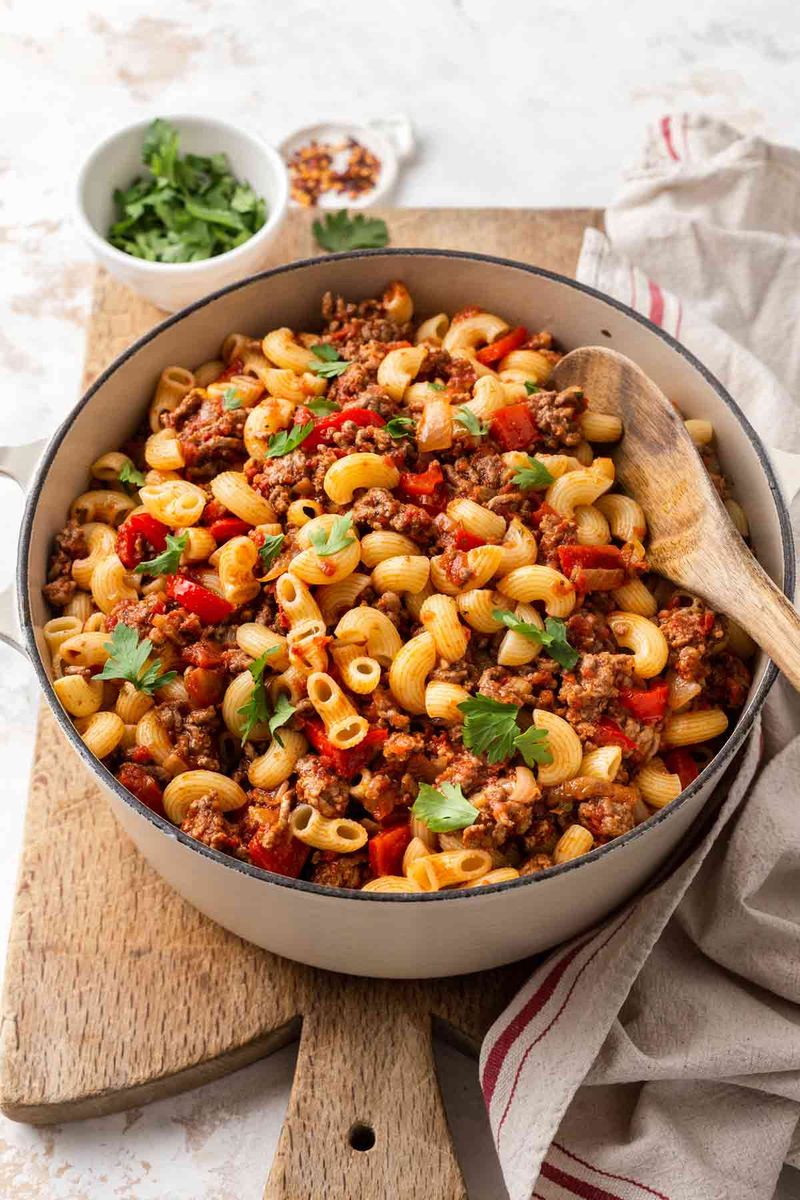
Not to be confused with its Hungarian namesake, American goulash combined ground beef, tomatoes, and elbow macaroni in a single pot that could feed a crowd. Busy mothers appreciated its simplicity—brown the meat, add ingredients, and dinner materialized without fuss.
Regional variations abounded: Midwesterners might add kidney beans while New Englanders preferred extra paprika. Some families called it “slumgullion” or simply “macaroni and beef.” Whatever the name, this humble dish represented practical cooking at its finest—affordable ingredients transformed into a satisfying meal that stretched to feed growing families.
8. Creamed Chipped Beef on Toast: Military Meets Mainstream
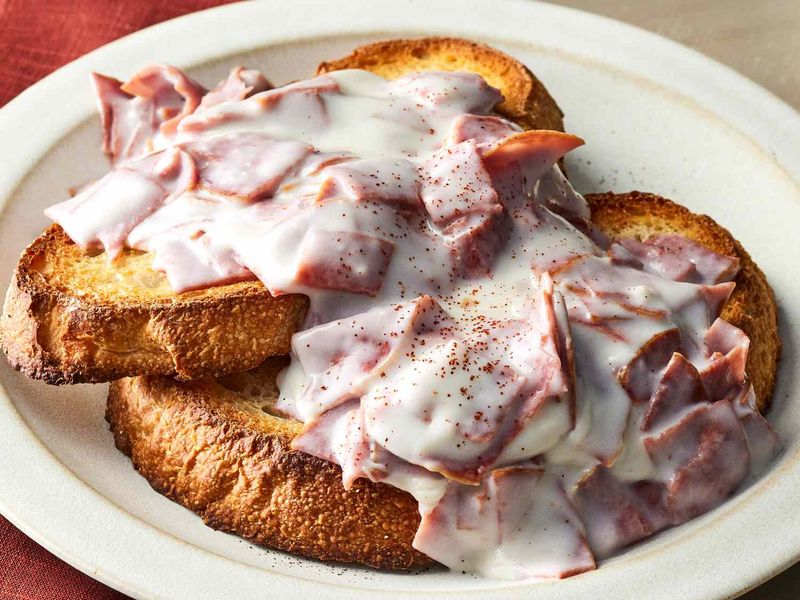
Affectionately (or not-so-affectionately) nicknamed “SOS” in military mess halls, this dish of dried beef in creamy white sauce poured over toast points made the leap to civilian kitchens during wartime. Veterans brought the recipe home, where it became a quick weeknight staple.
The salty, savory combination provided affordable protein when meat was rationed. Budgetary necessity turned culinary tradition as families embraced this simple creation. Though rarely seen on modern tables, it remains a nostalgic reminder of practical cooking that sustained generations through challenging times.
9. Jell-O Salads: Colorful Culinary Experiments

Nothing screamed mid-century American ingenuity quite like suspended fruits, vegetables, and sometimes even meats in vibrant, wobbly gelatin. These technicolor creations represented modern food science entering home kitchens—where housewives embraced convenience with artistic flair.
Church potlucks and holiday tables weren’t complete without these molded masterpieces. The lime version with cottage cheese and pineapple became particularly iconic. While modern diners might raise eyebrows at savory ingredients in sweet gelatin, these salads symbolized post-war optimism and creativity—when America’s food identity was being colorfully redefined in suburban kitchens across the nation.
10. Stuffed Bell Peppers: Colorful Meal-in-One
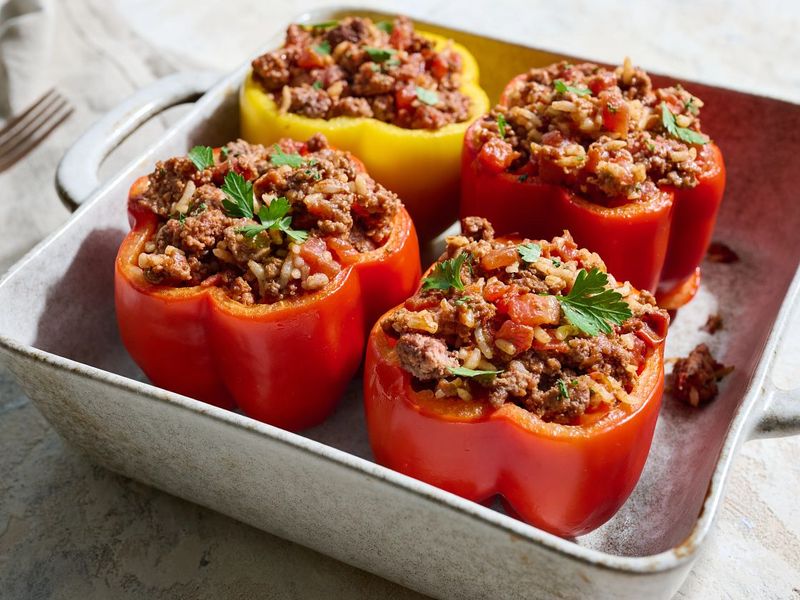
Bright bell peppers standing upright, their hollowed centers filled with savory mixtures of ground beef, rice, and tomato sauce, once represented efficient homemaking. The colorful vessels naturally portioned meals while adding nutritional value and visual appeal.
Frugal cooks appreciated how this dish stretched expensive meat with pantry staples. The peppers softened during baking, their sweet flavor complementing the seasoned filling. Before busy families relied on frozen dinners, these stuffed vegetables offered a complete meal in an edible container—showcasing the practical creativity that defined home cooking for generations.

